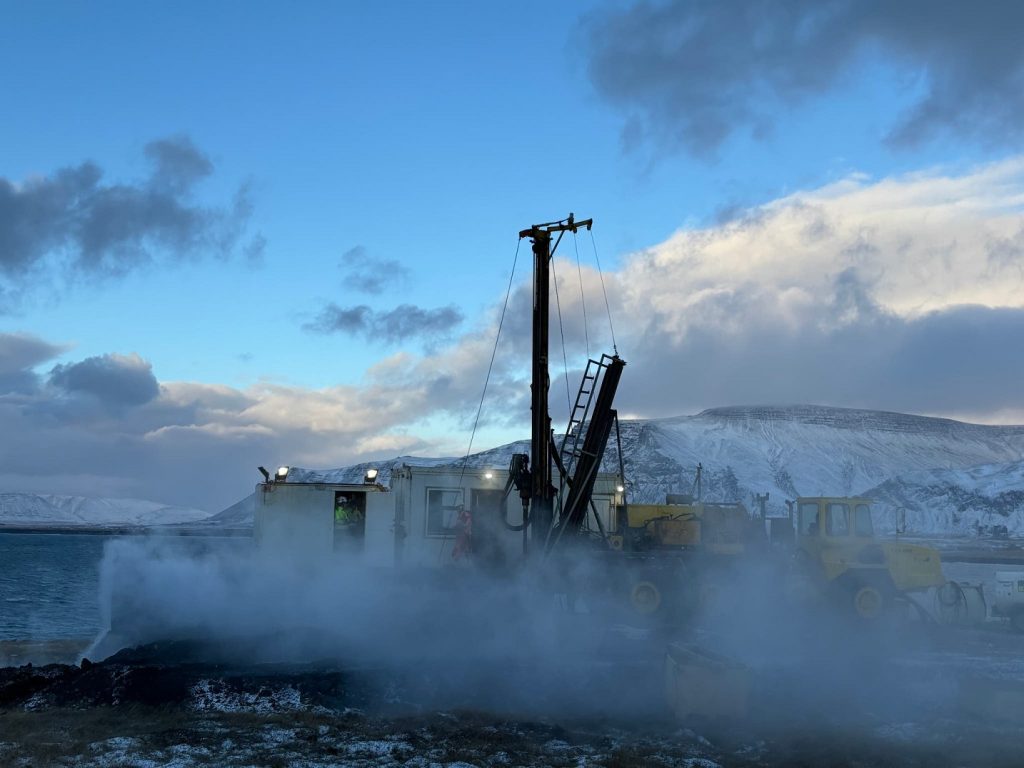
Veitur had previously announced plans for exploratory geothermal drilling at two sites in Reykjavik, specifically Kjalarnes and Geldinganes. Drilling operations are still ongoing, but Veitur can confirm that hot water indeed exists at both drilling sites.
Heating in Reykjavik is currently supplied by hot water from the Nesjavellir and Hellisheði power plants, as well as four low-temperature areas in Mosfellsbær (Reykjum and Reykjahlíð) and Reykjavík (Laugarnesinu and Elliðaárdal). The discovery of two more low-temperature zones within the city limits is a very positive outcome, as the need for energy for domestic heating and economic activity in the area is constantly growing in line with the growing society.
Results from drilling
Drilling of research wells in Kjalarnes started in 2022, already indicating that there is a strong temperature anomaly at the far end of Brimnes. It was then decided to drill two research wells to depths of about 800 meters. This autumn, the first well, SV-08, was drilled and confirmed hot water at 100 °C. A preliminary test also indicated flowrates of almost 40 L/s.
Further tests will still be needed to confirm the capacity of the new system, but early estimates indicate that it can produce up to 200 L/s of hot water in Brimnes. This corresponds to the needs of about 10,000 people.
In Geldinganes, well R-44 was drilled this November and tapped hot water at 90 °C and flowrates are estimated at about 20 L/s.
Future plans and other exploration work
When the work in SV-08 in Brimnes is completed in the next few days, the rig will then move 300 meters south to the location of well SV-09. More wells are planned to be drilled in the coming years, but if all goes to plant, water from Brimnes can be introduced to the system within 3 to 5 years.
A long-term production test will be done on well R-44 in Geldinganes once drilling has been completed. Information from this test will then be instrumental in planning the drilling of future wells.
Veitur is also drilling research wells in other areas to better map where geothermal energy can be found. When the drilling of well R-44 in Kjalarnes is finished, the drill will move east to Laugalandi in Holtum, where a well will be drilled that will hopefully be used to increase production for Rangárveita.
Veitur also has geothermal prospecting projects underway in several areas where thin and shallow wells are drilled for geothermal prospecting.
Extensive geothermal research has been carried out in Kjalarnes and Laugalandi in recent years, and the results of those studies were used to locate the wells we are drilling now this fall and winter in Brimnes and Laugalandi in Holtum. Geothermal research is currently underway at Borg á Mýrum and Álftanes, and in the near future research drilling will begin in Ásahreppi. Exploration wells are also being drilled at the southern side of Grafarvog (at Sævarhöfða and Stórhöfða).
Veitur’s plans include following up the exploratory drilling that has been done this year at Álftanes and Borg á Mýrum with deeper drilling that will determine whether usable geothermal energy can be found there.